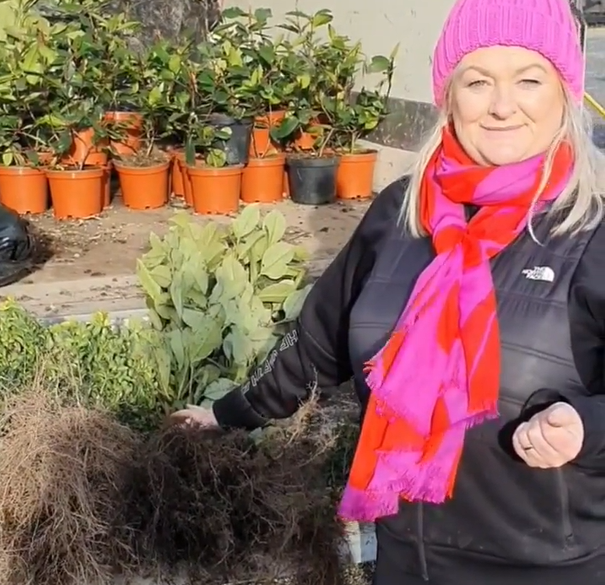Research before planting bareroot hedge plants
Hedges form an attractive natural fence, provide shelter from winds and other elements, and create a sense of privacy and security. Our bare root hedge plants are relatively cheap and easy to plant. It pays to have your research done early so that you choose the right type of plant for the right location as many of the different types have different soil requirements. We advise having the ground prepared so that the plants are spending the least amount of time between lifting and replanting, well-prepared soil is key to any plants ability to grow and flourish. If your soil is somewhat compacted we recommend adding a little grit or gravel to loosen it up and improve the drainage. Likewise, if your soil is poor and fairly sandy, we would recommend a few shovels of compost into each hole before planting.

Help & advice on root bare hedge plants
At Ahern Nurseries & Plant Centre, you can find all kinds of bare root hedge plants, like Beech, Laurel, Privet and Whitethorn. Hedging is in quite high demand already this season, so our advice would be to plant as early as possible. As always, we will offer you the best advice and know-how needed to buy….
✓ … the right type of hedge for your soil;
✓… the quantity required for your planting area;
✓ at the best price possible!
Bare root hedging is going out the door already, so don't hesitate to order your favourite plants online or to stop by our nursery & plant centre. We are open 9.30 am to 6 pm from Monday to Saturday.
.png)
What are bare root plants?
First things first: what exactly are bare root hedge plants? In short, they are plants without soil around the roots. They have been grown in the open field and have a 'bare root' visible when lifted from the ground. They are only available during their natural dormant season, which runs from November to April. Growing a bare-root hedge plant this way is less labour-intensive than growing a hedge plant with a root ball or in a container. This makes the bare root hedge plant relatively cheap. The plants do not have to be re-potted every year, and therefore fewer fertilisers are needed. In addition, transporting these plants is cheaper than transporting plants that have soil around their roots. This is because transport costs usually depend on weight.
Bare-root hedging: evergreen or deciduous?
Bare-root plants are usually deciduous, so they may look a bit bare at first. Yet, that will change rather quickly once planted. After a few years, bare-root hedge plants will form a beautiful hedge. Evergreen hedge plants, such as Yew, Boxwood and Laurel, retain most of their leaves, even if you receive them as bare-root plants. They often look beautiful right from the start.
How do I plant bare root hedge plants?
We recommend planting bare root plants in a zigzag pattern. Plant the hedge plants staggered next to each other to give you a dense hedge faster. Make sure that the hole is large enough and mix the soil with new potting soil and compost to create a healthy basis. After planting, the work is not done yet. The plant has to get used to its new environment and develop its roots. It helps to prune immediately after planting. This, of course, sounds very strange, but pruning allows the plant to focus more on its roots and root development. It also has the advantage that the hedge plant will create new branches after pruning. This reduces the long shoots and creates new branches, giving the hedge a fuller appearance.
Tip! Keep in mind a failure rate of about 10%. Yet, you can significantly reduce the failure rate if you use a root growth product that allows the roots to absorb nutrients from the soil more efficiently. Nevertheless, it is wise to order 10% extra plants. Plant them in a different part of your garden so that you can easily replace the hedge plant that unfortunately didn’t make it.
Buy bare-root plants at Ahern Nurseries & Plant Centre
Keep in mind: it is best to plant the hedge as early as possible in the season, preferably before the end of December. This is because the ground is still relatively warm, and the roots of your new hedge can get used to your garden soil more easily. Water the plants well until you put them in their final place. If you need any more advice, you know where to go. We are here to help out! Visit Ahern Nurseries & Plant Centre soon to find the hedge plants of your dreams…
.png)

